Ukraine war: US and allies may supply longer-range missiles – how this would change the conflict.
Noises from Washington indicate that US President Joe Biden may be about to overcome his reluctance to supply Ukraine with the longer-range missiles it desperately needs.
According to a report from CNN on September 11, which quoted “an official familiar with the discussions”, a final decision about the supply of army tactical missile systems (ATACMS) to Ukraine had not yet been made.
Written by Christoph Bluth, Professor of International Relations and Security, University of Bradford. This article is the opinion of the authors and not necessarily that of the UK Defence Journal. If you would like to submit your own article on this topic or any other, please see our submission guidelines.
But, according to CNN’s source, there is “a much greater possibility of it happening now than before … Much greater. I just don’t know when.”
The slow progress of Ukraine’s spring and summer counteroffensive has underscored the need for additional weapons capabilities. In particular, Ukraine is asking for missiles that can strike in Russia’s “deep rear” allowing Kyiv to target Russian field headquarters and supply depots.
In an article for Lichtenstein-based thinktank, Geopolitical Intelligence Services (GIS) published in August, the secretary of the Ukraine’s National Security and Defence Council, Oleksiy Danilov, set out a shopping list of weapons systems. This included ammunition and artillery shells of varying calibre, longer-range missile systems, cruise missiles, multifunctional aircraft and helicopters and drones (Danilov said Russia had a five-to-one advantage in drones).
Kyiv is also seeking sophisticated robotic de-mining equipment and is encouraging its allies to set up maintenance and repair facilities for western weapons in countries bordering Ukraine.
During the summer of 2022, the US supplied guided multiple launch rocket systems, missiles that are launched from Himars (high-mobility artillery rocket systems) and have a range of 70kms. These were used to carry out attacks on Russian logistical facilities that were previously positioned beyond the reach of artillery fire. This forced Russia to relocate ammunition depots and other crucial centres.
But ATACMS, which are also launched from Himars and have a range of up to 300kms, would make it very difficult for Russia to defend its lines in the south. This could prove crucial as Ukrainian troops press to break through and drive towards the sea of Azov, 100kms away.
Change of heart
Biden’s initial reluctance to supply longer-range missile systems was due to US fears that ATACMS could potentially be used to strike targets deep into Russian territory, risking escalation. But Ukraine’s strategy of using home-grown drones to attack inside Russia suggests it is aware of the reasons for US reticence.
And Ukraine already has some longer-range missile systems, such as UK-supplied Storm Shadow cruise missiles which are believed to have been used in a recent attack on the Russian Black Sea Fleet facilities at Sevastopol. This damaged – reportedly beyond repair – two vessels: a Ropucha-class landing ship and a Kilo-class submarine.
Biden’s decision to reverse the US position on allowing Nato allies to supply Ukraine with the F-16 fighter jet is an indication that the US – and with it, Nato – are aware of the need to significantly boost Ukraine’s arsenal if it’s 2023 counteroffensive is to achieve its goals sooner rather than later.
Meanwhile the German government is currently contemplating the provision of Taurus cruise missiles to Ukraine, which are capable of autonomously approaching their targets. Taurus missiles have a range of up to 500kms.
Again, range and the fear of escalation appears to be a sticking point – and the German government is considering modifying the system to limit its reach. The Taurus is reported to travel at 35 metres above the ground, making it hard for radar systems to lock on to, and can achieve an air speed of 727mph.
Pressure from Kyiv
Ukraine’s constant narrative since Russia invaded in February 2022 has been its evolving need for more – and more sophisticated – weapons systems. Quoting Article 51 of the UN Charter in his August article (which ran under the headline “Why Ukraine needs weapons right now”), Oleksiy Danilov said it was “squarely in the self-interest of UN members to aid Ukraine in its own defence”.
Danilov tracked Ukraine’s changing needs from its initial desperate defence against Russia’s invasion force, which enjoyed vast superiority in artillery, to its requirements now as Ukrainian forces battle to break through Russian defensive lines.
He also stated plainly what many have been saying for some time: “If Ukraine can attain the goals of its current offensive operation, it will be able to maintain long-term attention and aid from western countries.”
Russia has shown some capacity to adapt to changes in Ukrainian tactics. But the deployment of ATACMs and Taurus cruise missiles and other missiles with a longer reach would enable Ukraine to strike targets throughout the entirety of the Ukrainian territory under Russian control. This includes Crimea – as demonstrated by the recent succcessful attack on Sevastopol.
To this end, the Ukrainian president, Volodymyr Zelensky, is maintaining the pressure on Biden and other Nato leaders. He recently declared that while his country is grateful for every bit of western help, delays due to political considerations are costing Ukraine dearly in terms of the lives of its soldiers and the momentum of its counteroffensive.
“We … waited too long. It’s true. I’m thankful to partners, to the United States, EU, other partners,” he told CNN on September 11. “I’m thankful very much to President Biden and to Congress, but we have to understand: we waited too long, they [the Russians] put in mines.”
As part of its preparations for Ukraine’s counteroffensive, Russia spread minefields across its defensive lines. The country is now believed to be one of the most mine-contaminated countries in the world.![]()
Christoph Bluth, Professor of International Relations and Security, University of Bradford. This article is republished from The Conversation under a Creative Commons license. Read the original article.


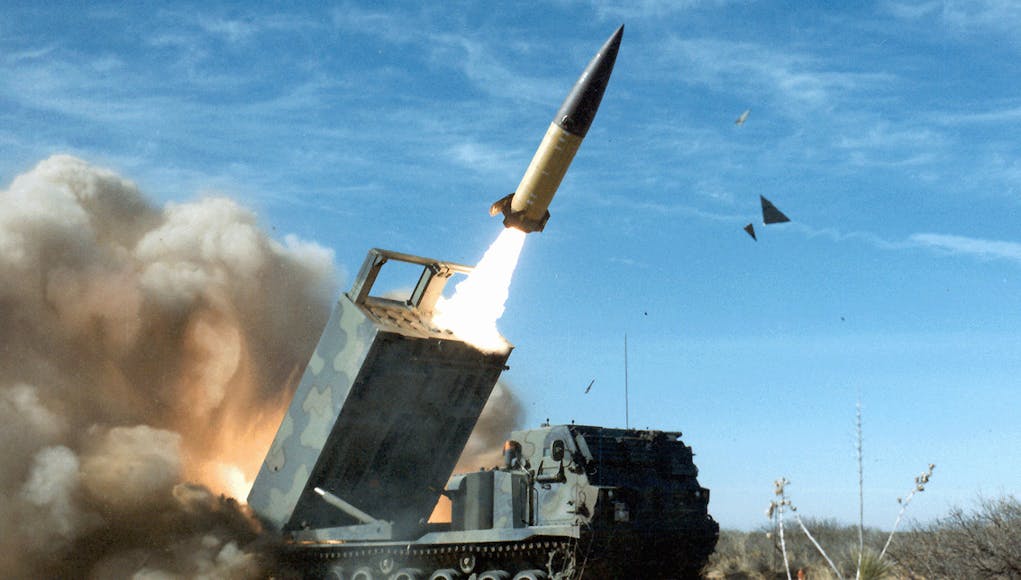


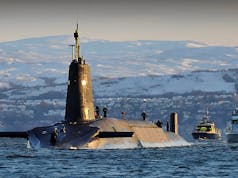
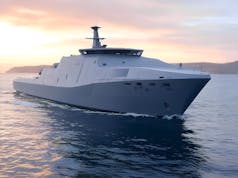
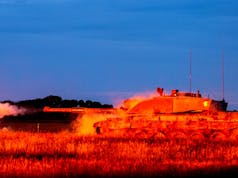

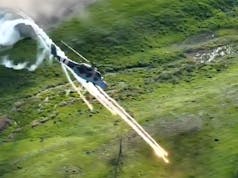


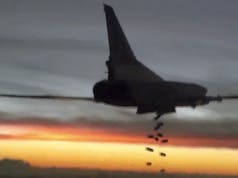

Interesting article, the balance is the Poland has now said it will no longer supply arms to Ukraine…the west needs to stay in lock step on this, if Russia ( and china) see disharmony it will embolden them.
It is the EU’s CAP that is at heart of this dispute. Time for reform of it!
The gammon voted to leave the EU, this meant the the Central Europeans who had followed the UK on EU issues were left rudderless and left to forge their own way…s (!) in the world.
Well done gammon.
Those Central Europeans, along with France are the major beneficiaries of the CAP, receiving more funds in than out, from the EU’s budget.
Whom are consuming Poland’s Agricultural produce?
Db get over it 😡
Common Agricultural Policy. Really?
Graham Moore wrote:
As reported by DW (20/09/23)
Ukrainian grain: Why are eastern EU members banning imports?
The eastern member states of the European Union — with the exception of Hungary — have until now been the union’s most consistent supporters of Ukraine since it was invaded by Russia in February 2022. Now, however, not only are cracks appearing in this wall of solidarity, there is even considerable ill-feeling between Ukraine and several of its neighbours in Central and Eastern Europe. The reason for the dispute is the fact the EU lifted its temporary trade restrictions on Ukrainian grain and oilseeds last Friday. Poland, Slovakia and Hungary are opposed to the move and want to keep import restrictions in place although this would mean violating EU law. Ukraine has responded by filing a complaint with the World Trade Organization.
Overland routes vital for Ukraine
Ukraine is one of the world’s largest producers of grain and oilseeds. Until recently, most of its exports were shipped to regions outside the EU. However, Russia’s blockade of the Black Sea ports means that Ukraine is now cut off from its traditional export routes and is forced to rely on other paths such as the overland transit routes through Poland, Slovakia, Hungary and Romania.
Problems have repeatedly arisen, above all in Poland, where instead of transiting through the country to other markets, some of the grain landed on the Polish market — pushing down prices or taking up storage capacity. After several farmers’ protests, both Poland and Hungary imposed import restrictions on Ukrainian grain in mid-April and forced the EU to impose a temporary import ban for the entire union. This ban remained in place until it expired on September 15. The EU sees its decision not to renew the ban as a gesture of solidarity with Ukraine. In the eastern member states of the EU, however, the issue has long assumed a very different importance: It is now a matter of domestic policy and the subject of a power struggle with Brussels.
Poland: Ruling party seeks to stay in power
For Poland’s ruling Law and Justice (PiS) party, this is about maintaining its grip on power. In an election many observers consider pivotal, Poles will elect a new parliament on October 15. Farmers played an important role in PiS’s two previous election victories, in 2015 and 2019. But Jaroslaw Kaczynski’s party got a rude awakening last spring when furious farmers across the country took to the streets to protest the government’s agricultural policy and oppose the transit of Ukrainian grain across Polish territory. Prime Minister Mateusz Morawiecki responded by sacking his agriculture minister and persuading the European Commission to impose the embargo that expired last Friday. With the election just around the corner, Morawiecki has no intention of risking further protests that could damage his party’s election prospects, which is why Poland swiftly implemented its unilateral import ban.
The government is toeing the line drawn by party leader Kaczynski last week when he said: “We are ready to support Ukraine during the war and during its reconstruction and we want to take part in the reconstruction but at the same time, we must remember our citizens, our agriculture and our countryside. Our Ukrainian friends should understand that.”
Nevertheless, there is still hope for a compromise: The Polish embargo relates to imports, but not the transit of Ukrainian grain.
Thanks Farouk for your very detailed answer. I wonder if Poland’s cessation of supplying military kit will be temporary? They have been good supporters of UKR thus far. Guess it is up to the EU to sort this dispute out.
Well… Poland has provided a lot of hardware to Ukraine. They have a lot of purchase order, but not so many weapons.
USA may soon switch side on Ukraine policy, with Trump. War probability is rising with China. So the likelyhood of receiving any weapons from South Korea is falling, while the perspective of being at war with Russia is growing. Their position is understandable.
Overblown i.e. typical news slant. Yes, Poland has said this – because it’s delivered practically all the ex-soviet equipment Ukraine’s familiar with. It’s still going to provide all back up support it can to keep equipment serviceable. It is well aware that UKR is fighting the war on West behalf that PL thought it’d have to. Meantime, PL modernises its armed forces.
Separately, have just watched the most surreal video of Ukraine striking Naval HQ in Sebastopol. Population evidently so confident UKR does not intend to target them, unlike Russia against Ukraine, that they stand around in the sun appearing unfazed to watch & film the missile ‘show’.
Rgs
Unfortunately it’s a bit more than that, Poland is heading into elections and Ukrainian grain imports is a big ticket item in Poland…Ukraine needs to sell its grain, Poland does not like its effects on the price of Polish grain..it’s in issue at present.
An issue it is, but that’s what diplomacy is for. The big issue is very well known. Rgs
Re Poland and Ukraine, I would imagine it will be resolved..the problem is how Putin sees it and how that regime will spin it to their own public….anything that gives Putin hope or ammunition is a western democracy own goal, unfortunately.
Well, Putin – 🖕
KRs
re. Poland, this is just a pre-election hot air by Polish officials, on the back of that grain spat. Regardless of ‘no love lost’ between the Poles and the Ukrainians, Poles would rather have Ukrainians fight the Russians than having to do it themselves, on their own land.
Simple, Russia would lose the deep battle!
Why has the US been slow to supply tanks, to approve gifting of F-16s by Europeans and to even consider gifting ATACMS?. The Russians meanwhile have had the time to strengthen their defensive lines.
One simple word, escalation. The US President in particular has been dragging his feet on sending top tier equipment to Ukraine. Small arms, ammunition, clothing, MREs, AT4s, Javelin, NASAMS, M777 etc are all considered defensive by nature. There was even a struggle initially sending HIMARS, but that eventually went through. Biden’s and his administrations big worry is that US military kit being used on the Russian Homeland territory. Which may be taken the wrong way by Putin and his cronies.
It’s probably written into a contractual agreement with Ukraine, that US weapons won’t be used to attack Russians on their home soil. Which is why weapons such as JDAM have been allowed. Similar I’m sure for the F16s with a no overfly restriction.
The M270/HIMARS launched ATACMS adds a whole new level of worry to the US Administration. As it can be used to target most of Crimea from behind the Ukrainian lines, but also deep into Russia.
I think the US are closely watching Ukraine’s offensive. But also seeing how well they are employing Storm Shadow/Scalp. As Ukraine has ably demonstrated the Su-24/Storm Shadow combination is working really well. They have managed to take out targets without a lot of hindrance either in occupied Ukraine or Crimea. Is there a need for ATACMS? Storm Shadow’s warhead at 450kg is only 50kg smaller than the ATACMS. Plus it is better when used against hardened targets. I guess the biggest advantage of ATACMS, is that it can be fired from either a HIMARS or M270 vehicle, making them more flexible than the Su-24. Whose airfields are being constantly targeted. If Ukraine does get ATACMS, then expect Russian forces and military infrastructure in Crimea to get a thorough pasting!
I very much doubt the US are much worried about the Ukrainians firing ATACMS against Russian territory, they have stuck (largely) to the deal and haven’t used Western-supplied arms to strike Russia (with some minor deviations like harm missiles against Belgorod airport, or – potentially – patriot against those few choppers this year. But the US might be worried about ATACMS being used, and parhaps in a massive attack, against Sevastop and the Black Sea fleet. If ‘too’ successful this might trigger Russians over a real red line this time. In the meantime, slow-boiling the Russian frog seems to work. Yes, at a price of Ukrainian lives.
One could envision POTUS, pacing in the West Wing of the WH, delivering an updated version of Hamlet’s soliloquy: To escalate, or not to escalate, that is the question…(apologies to W. Shakespeare)…🙄 A somewhat tiresome refrain when the script is repeated virtually verbatim for the nth time. Oh well, this is the caliber of 21st century statecraft/prose…😳😱
I wonder if the USA doesn’t actually have what it considers spare ATACMs and what it does have has some issues with it. Reliability, needing an upgrade, difficulty transporting safety etc.
nato countries could of made a new missile by now if it was really needed and ATACMs can’t be supplied.
Ukraine needs a lot. The U.K. could do more and it supports industry building vehicles, arms etc. they don’t need to be top tier Uber expensive. 80% decent will do. Once it’s started other countries will join in.
most recent package list (does not include ATACMS):
Seems like a lot of the kit was asked for to continue pushing through the Russian lines. Ukraine doesn’t want to slow down as it gives Russia a chance to set up new trenches, minefields etc.
some folks think the weather will stop offensives but I’m doubtful it will slow down much.
Very bad weather that reduces visibility and causes vehicles to bog in has always slowed down or stopped offensives. Rasputitsa – https://en.wikipedia.org/wiki/Rasputitsa
Old Joe is an enigma: for someone determined to end America’s ‘forever war’ he’s pretty set on starting another one.
Obviously he couldn’t send them the entire US arsenal overnight and expect Ukraine to just hit the ground running but how Putin feels shouldn’t be part of the equation.
Anyone know if the UK is getting the ATACMS as part of its MLRS upgrades?
Its been hinted that a future purchase of the Precision strike missile (ATACMS replacement) may be purchased to go alongside the upgraded MLRS.
Probably the PrSM that’s coming along soon.
Also, all UK M270 B1’s have the hardware for ATACMs, just a s/w update needed, but PrSM is the way ahead.